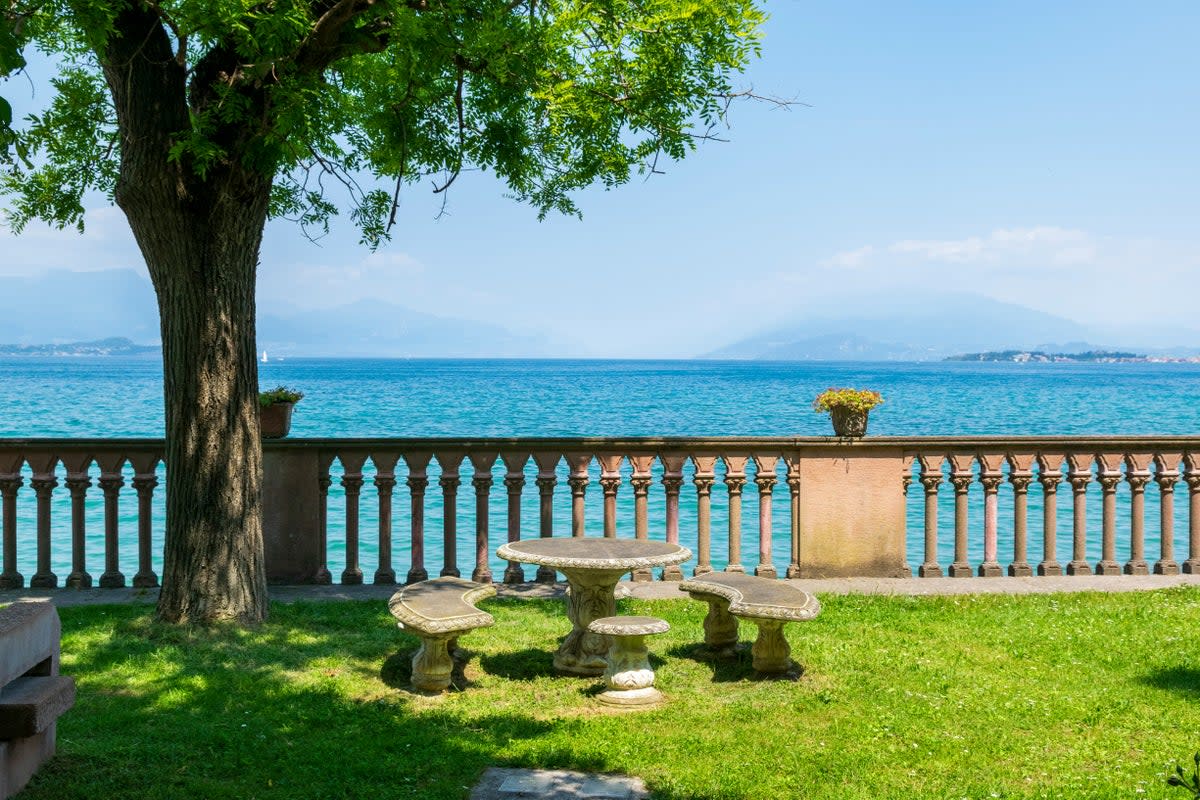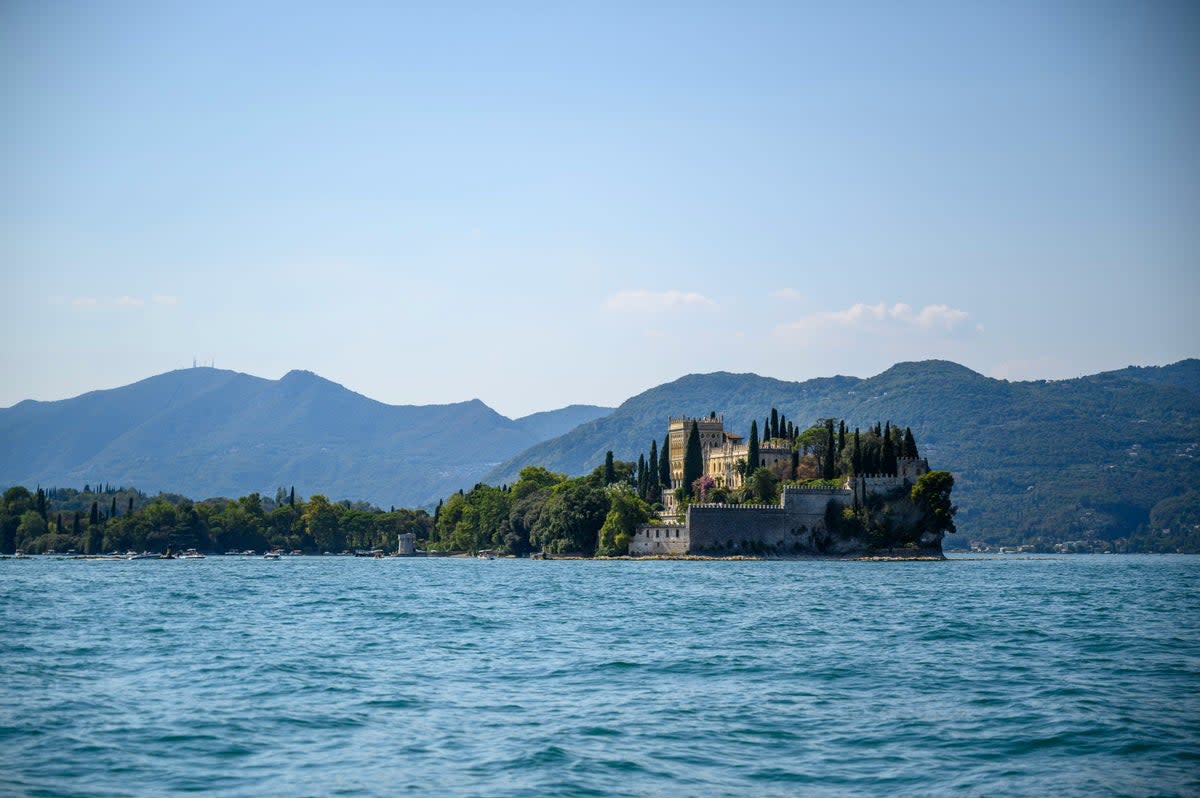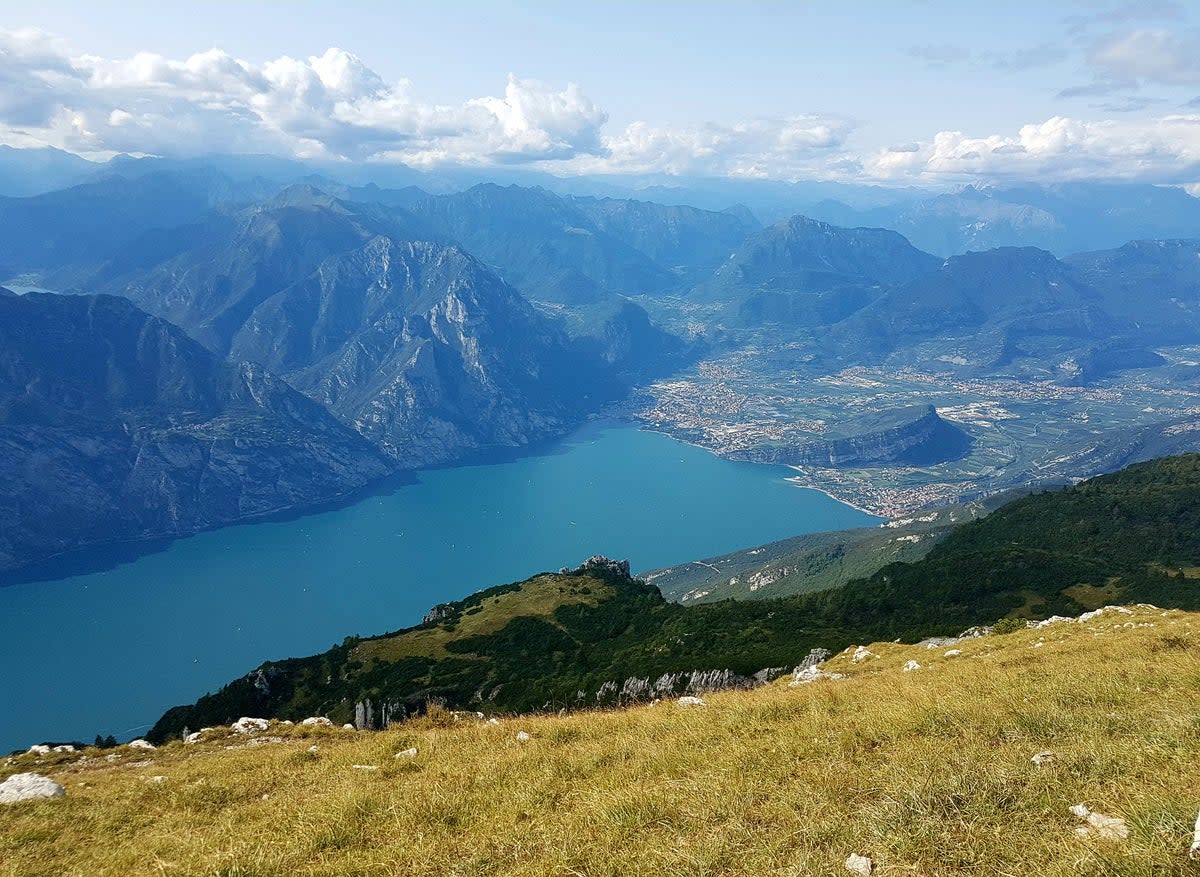7 of the best things to do in Lake Garda

In a country like Italy, spoilt rotten with fantastic tourist destinations and beautiful sites, from the historic cities of Rome and Florence to the the breathtaking landscapes of the Dolomites and the Amalfi Coast, a place has to be exceptional to stand out.
But Italy’s lakes manage it, sitting pretty in the north of the country, combining centuries-old architecture, riviera colours, and magnificent landscapes – with Lake Garda arguably the most delightful of the lot. Rolling hills, covered with verdant forests and hillside greenery, climb up from the waters, while a slew of pastel-hued towns are scattered throughout.
Hiking, walking and water sports are all ways to fill the day, or you can simply live a bit of la dolce vita among the olive groves, vineyards and tree-lined promenades.
With so many towns on the lake, picking out where to go and what to do may seem tricky, but we’ve rounded up a list of the best things to fill your holiday on this Italian lake.
Visit the lake’s main towns

Lake Garda has a handful of larger towns that are ‘must-see’ destinations along its shores. Riva del Garda and Desenzano del Garda are two of the largest, both filled with russet-roofed, pastel-hued Venetian and Baroque buildings. Both offer water sports, quaint restaurants and a dash of history, in the form of the Desenzano’s well-preserved Roman villa and Riva’s 13th-century Apponale clock tower.
For one of the most peaceful towns on the lake, head to Peschiera, a town dotted with pastel buildings and ornate bridges that is also a popular spot for ferry tours. In the west, the pretty town of Salò, which once served as Italy’s de facto capital under Mussolini, is a colourful blend of Italian history and culture, from a medieval Santa Maria cathedral to the Baroque palace. It is also famed for having one of the longest promenades in the country, making it the ideal spot for a stroll.
Read more on Italy travel:
Best Italy holiday destinations: When to travel and where to stay
Forget Naples – why pizza-lovers should stay at its under-the-radar neighbour
Milan city guide: Best things to do and where to stay in Italy’s northern powerhouse
Spend an afternoon on the Isola del Garda

The Isola del Garda is the largest island on the lake, and despite being owned by the Cavazza family, it has been open to the public since 2002. Today, this verdant landscape is covered in forest, with one side dominated by the Villa Borghese Cavazza, a neo-Gothic Venetian villa that offers guided tours of its interior and grounds filled with tropical plants.
Tours last up to two hours and cost around €36 (£30), including a return ferry trip from towns including Salo, Maderno and Barbarano.
Hike around Monte Baldo

Monte Baldo is the name of the mountain ridge that towers over the north-eastern shores of the lake. It contains five particularly high peaks – the tallest of which is Cima Valdritta at 2,218m – and so is a haven for hikers and mountain bikers. For the best views catch the cable car from Malcesine, where you can get a panoramic view of the azure waters, rolling green hills and olive groves. From here, a series of hiking trails and biking routes descend the hills back to the shores.
Tour the smaller towns

If you have the time when visiting Lake Garda, it pays to see some of the smaller towns and villages. Places like Malcesine are well-known despite having small populations, and have postcard-perfect shorefront locations dotted with red roofs, summery colours and medieval touches. Malcesine has easy access to Monte Baldo and the magnificent ruins of the Scaliger castle.
Smaller Limone is even more quaint, located at the foot of a mountain and covered in the pastel colours that have made the region’s towns so famous – it is also more authentic and less affected by tourism, with one of the primary attractions being a centuries-old lemon grove turned museum.
Sirmione is one of the Lake’s most visited towns, known for its thermal springs and spa, beautiful Old Town and the Grotte di Catullo Roman villa. Garda, the town which gave the lake its name, is a slice of quintessential Italy, dotted with old Venetian villas, cafes, and cypress trees, and plenty of relaxed locals taking an evening passeggiata along the promenade and through the piazzas.
Try your hand at water sports
The lake lends itself to several water sports, and activities such as kayaking, stand-up paddle boarding and canoeing are popular in several destinations. In the northern basin, two winds – the Peter, which blows north to south in the morning, and the Ora, which goes the opposite way in the afternoon – provide great conditions for windsurfing, while the area around Garda Trentino is safe as motor boats are forbidden.
The waters of Malcesine, Riva and Gargnano are good for diving – the latter has a boat wreck at around 40 metres – while almost all of the major towns have sailing clubs to choose from. The same is true for canoeing, kayaking and water skiing facilities.
Drive the Strada della Forra
The Strada della Forra is a road that was initially conceived in 1889 in order to make the journey between the lake and Pieve di Tremosine sul Garda viable. It cuts through a ravine and winds along rocky cliffs, with several tight spots and hair-raising bends to navigate for those who take it on, eventually rising to around 360 metres from the waters. There is a pedestrian path that runs along the route – before the road, people could only reach Pieve on foot – but cycling, motor biking and driving are still the best ways to see this magnificent route.
Visit the Cascata del Varone waterfall
The Cascata del Varone is a somewhat unique waterfall, in that its falls flow through a limestone tunnel rather than off the face of a cliff. A series of walkways guides you through the gorge to see the cascade, with colourful lights lighting up the inside and a botanical garden growing on the cliffs outside.
Read our reviews of the best Italy hotels


